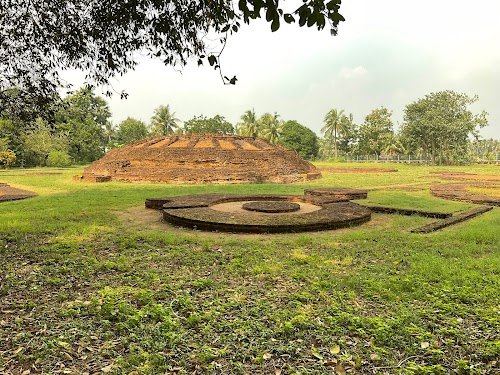
Adurru Buddha Stupa
East Godavari, India
- Explore the ancient Buddhist stupa remains.
- Learn about the Satavahana period.
- Meditate in the peaceful surroundings.
- Photography of the historical site.
Known for:
Description:
Adurru, a serene village in East Godavari, Andhra Pradesh, is home to a significant Buddhist stupa, offering a glimpse into the region's rich Buddhist past. The site features the remains of a Mahachaitya, platforms, and other structures dating back to the 2nd century BCE. The circular stupa, with its ayaka platforms in four cardinal directions, showcases intricate brickwork and once housed relics of the Buddha. Visiting Adurru provides a tranquil experience, allowing you to connect with ancient history and appreciate the architectural marvels of early Buddhism in India. The surrounding landscape adds to the peaceful ambiance, making it a worthwhile destination for history buffs and spiritual seekers alike. The site is maintained by the Archaeological Survey of India.
History:
The Adurru Buddhist site flourished between the 2nd century BCE and the 2nd century CE, during the Satavahana period. Excavations revealed a well-preserved stupa built with bricks, showcasing early Buddhist architectural styles. The stupa's ayaka platforms indicate that it was a significant center for Theravada Buddhism. The site's discovery sheds light on the spread of Buddhism in the Vengi region of Andhra Pradesh. Over time, the stupa was abandoned and gradually buried under layers of earth. Rediscovered in the 20th century, the site underwent restoration, revealing its historical and cultural importance. Today, Adurru stands as a testament to the region's vibrant Buddhist heritage, attracting scholars and tourists eager to explore its ancient past.